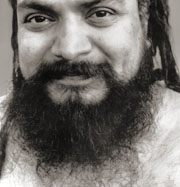Shivabalayogi and English Translations
of Yoga Vasishta
Encouraged by Shivabalayogi’s praise for Yoga Vasishta, devotees in the United States tried to find copies.
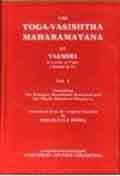 The only complete English translation of the Sanskrit work
was a two-volume set by Vihari Lal Mitra printed in 1891, long out of print and existing copies scarce. A new abridged
translation by Swami Venkatesananda, The Concise Yoga Vasishta, had recently been published in 1984. We asked Swamiji about it and he complained that it was not as good as
the original because in shortening and adapting the original, Venkatesananda had made too many alterations. We read the abridgment anyway,
and the book was mind-altering even in that form.
The only complete English translation of the Sanskrit work
was a two-volume set by Vihari Lal Mitra printed in 1891, long out of print and existing copies scarce. A new abridged
translation by Swami Venkatesananda, The Concise Yoga Vasishta, had recently been published in 1984. We asked Swamiji about it and he complained that it was not as good as
the original because in shortening and adapting the original, Venkatesananda had made too many alterations. We read the abridgment anyway,
and the book was mind-altering even in that form.
Venkatesananda wrote more expanded abridgments, Vasistha’s Yoga published in 1993, and The Supreme Yoga, 2007. Like the earlier The Concise Yoga Vasistha, these works are extremely well written, intelligent and inspiring. His modern English is excellent. Swami Venkatesananda and Swami Jyotirmayananda, who produced the abridged Yoga Vasishta, are direct disciples of Swami Sivananda of Rishikesh. Swami Jyotirmayananda gives occasional podcasts on Yoga Vasishta and he has written a six-volume summary of its essence.
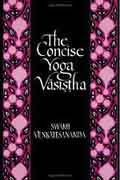 How Shivabalayogi knew anything about Venkatesananda’s
The Concise Yoga Vasistha
is anyone’s guess. It’s not like he read it. But comparing
Venkatesananda’s more complete Vasistha’s Yoga with Mitra’s 1891
translation, chapter by chapter, it becomes obvious how much Venkatesananda omitted.
The Concise abridgment reduces the original by about three-quarters.
How Shivabalayogi knew anything about Venkatesananda’s
The Concise Yoga Vasistha
is anyone’s guess. It’s not like he read it. But comparing
Venkatesananda’s more complete Vasistha’s Yoga with Mitra’s 1891
translation, chapter by chapter, it becomes obvious how much Venkatesananda omitted.
The Concise abridgment reduces the original by about three-quarters.
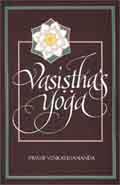
 Mitra knew Sanskrit and read the commentaries. He was also an excellent scholar in Western spiritual poetry and literature.
Those who do not read Sanskrit can only give second hand evaluations, but his translation may reflect the poetical
qualities in which the Sanskrit of Yoga Vasishta was written. Indian scriptures were first meant to be heard and only
in later ages to be read. Obviously a lot of meaning has been lost since the ancient
times of the Treta Yuga.
Mitra knew Sanskrit and read the commentaries. He was also an excellent scholar in Western spiritual poetry and literature.
Those who do not read Sanskrit can only give second hand evaluations, but his translation may reflect the poetical
qualities in which the Sanskrit of Yoga Vasishta was written. Indian scriptures were first meant to be heard and only
in later ages to be read. Obviously a lot of meaning has been lost since the ancient
times of the Treta Yuga.
Some criticize Mitra for taking liberties and augmenting the text. Currently there is a collaborative volunteer project to prepare a completely new English translation of the original Sanskrit (Google Group Yoga Vasishtha). They recognize that Mitra’s 1891 translation “is not a satisfactory translation. The English is very poor. It often uses the word ‘God’ to translate ‘Paramatma’, etc. But worst of all, it constantly paraphrases and amplifies the text it ought to be translating. But it is all we have for a complete translation.”
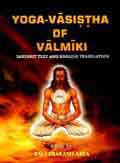 Archaic English
in the Mitra translation apparently motivated Ravi Prakash Arya to prepare an
edit. The result is Yoga Vasistha of Valmiki published in
India four volumes in 1999. Arya notes that Mitra’s
Bengali background affected his Sanskrit spelling, that Mitra used archaic English, and
that some of Mitra's rendering was simply misleading. For example, Arya writes, Mitra misleadingly translates samadhi as hypnosis or trance.
Archaic English
in the Mitra translation apparently motivated Ravi Prakash Arya to prepare an
edit. The result is Yoga Vasistha of Valmiki published in
India four volumes in 1999. Arya notes that Mitra’s
Bengali background affected his Sanskrit spelling, that Mitra used archaic English, and
that some of Mitra's rendering was simply misleading. For example, Arya writes, Mitra misleadingly translates samadhi as hypnosis or trance.
There are other English translations, abridgments and commentaries available in India. Vidvan Bulusu Venkateswarulu translated the complete six books of Yoga Vasishta, but not the supplemental second part of the sixth book on Nirvana. His complete translation was published over twenty years ago in Kakinada, Andhra Pradesh, but this also is out of print.
Swamiji told us in the United States that he would have a new English translation prepared by a devotee in India working with the edition Swamiji himself had read, twice. This edition contains parallel Sanskrit and Telugu text. The Telugu translation was done by Swami Purnananda and Swami Vidyaprakasanandagiri of Vyasa Ashram, Erpedu, Chittoor District, in Andhra Pradesh, India. The devotee was Prof. P. N. Murthy, an engineering professor educated in Telugu and English and who also knew Sanskrit.
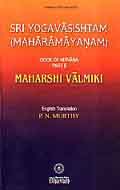 In a draft
introduction to the Book on Nirvana, Prof. Murthy
wrote how Shivabalayogi encouraged him to prepare a new translation. “The
magnitude of the task was staggering,” Murthy wrote, then added, “There is another angle to it. Devotees all
believe that Swamiji was Vasishta and what is preserved in the Yoga Vasishta
is what he said thousands of years ago. We hope that through this translation, he is again speaking to the world.”
In a draft
introduction to the Book on Nirvana, Prof. Murthy
wrote how Shivabalayogi encouraged him to prepare a new translation. “The
magnitude of the task was staggering,” Murthy wrote, then added, “There is another angle to it. Devotees all
believe that Swamiji was Vasishta and what is preserved in the Yoga Vasishta
is what he said thousands of years ago. We hope that through this translation, he is again speaking to the world.”
Prof. Murthy’s English translation of the Book of Nirvana was published in India in two volumes. The translation suggests that the Sanskrit verses are terse with little in the way of flow connecting or developing concepts. Perhaps this is driven by the slokas (couplets) in which the Sanskrit text is composed. This staccato flow of the text is also apparent in Mitra, but somewhat less because he added and amplified. Prof. Murthy’s translation condenses many verses. He also omits some of the detailed descriptions, so in some ways, it is incomplete. On the other hand, he included one reference to vidyadhara (demigod) love making which the Victorian prude Mitra omitted.
![]()
The English language in Mitra's1891 translation is much like that in the King James Bible — archaic, loaded with thee's and thou's, and frustratingly opaque. The text is already difficult without obscuring its substance with Victorian language. That text has been updated to a more modern and standard English in the Yoga Vasishta available through the Bookstore in this website.
![]()
